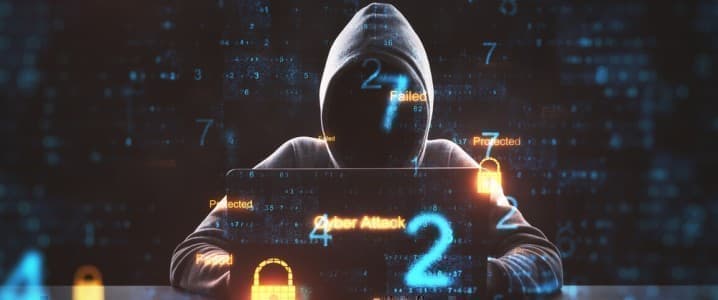The world is rapidly ramping up its renewable energy capacity in line with ambitious climate pledges. While this is great for the planet, the accelerated transition to green brings new challenges. Many sectoral experts are now concerned about what the rise in electricity use from renewable sources could mean for cybersecurity in the coming years.
In the U.S., the government is growing increasingly concerned about the potential for vulnerabilities in the country’s energy network, which could open the door to cyberattacks. The FBI recently gave a warning to the private sector and individual renewable energy owners about the potential for hacks. While major energy companies are well prepared for cyberattacks, smaller firms, startups and individuals with renewable portfolios may be unprepared for such attacks, and hackers are well aware of this.
The U.S. is rapidly expanding its renewable energy capacity as a means of decarbonizing the economy, supported by far-reaching climate policies. The 2022 Inflation Reduction Act (IRA) provided a wide array of financial incentives for the adoption of renewable energy. This has encouraged far more small companies and individuals to invest in clean energy systems. The shift away from fossil fuels to renewable sources resulted in a rise in the contribution of renewable energy sources to U.S. electricity consumption to 21 percent last year.
Although the FBI did not issue the warning in response to a recent attack, it is concerned about the increasing vulnerability of energy systems. It noted that in 2019, a private renewable energy systems operator “lost visibility” of around 500 MW of wind and solar sites in California, Utah, and Wyoming. While attacks on residential solar systems and microgrids have been rare in the past, the growth of the sector could give way to an increase in the number of attacks.
There are also fears of cybersecurity risks for the government, as the Biden administration plans to transition several federal buildings and transportation systems to green. Under the Clean Energy for New Federal Buildings and Major Renovations of Federal Buildings Rule, federal agencies are required to decrease their on-site fossil fuel use by 90 percent, compared with 2003 levels, in construction and renovation projects starting between 2025 and 2029, and bring an end to on-site fossil fuel use entirely in new projects starting in 2030.
The Metropolitan Washington Council of Government plans to install as many as 250,000 solar rooftops by the end of the decade, while Virginia aims to generate 5,500 MW of wind and solar power by 2030. Several state departments rely heavily on these energy sources, which could put them under threat of attack as these states transition to green. This is of particular concern for the U.S. Department of Defense, which is the highest energy consumer in the government and depends heavily on local electric grids.
One of the biggest issues is that due to the speed of development and the need to transition away from fossil fuels, many renewable energy projects in the U.S. are being developed without the implementation of conventional utility protocols and regulations. Jim Hempstead, Moody’s Ratings managing director, explained, “It’s on the edge of the grid… It’s not a utility company that usually owns, operates, generates and builds these things. It is usually a non-regulated utility, and so they’re not regulated by the state utility commission the way (traditional) utility is. And, we know that regulation is a big benefit from a credit perspective because it provides that level of oversight.”
This is a difficult challenge to tackle, as the need for an accelerated green transition is widely agreed upon at the international level, by organisations such as the International Energy Agency (IEA). However, the speed of the rollout of renewable energy projects could put energy systems under greater threat of attack. Understandably, most companies across the U.S. do not want to fall behind when it comes to renewable energy uptake, particularly as the pressure to decarbonise mounts and several financial incentives are in place to invest in green energy systems. Nevertheless, they must also be aware of the potential security threat that this could entail.
The U.S. Office on Energy Efficiency and Renewable Energy has emphasised the importance of making owners and operators involved with solar energy more cyber-aware and cyber-secure, with capabilities to prevent, identify, detect, respond to, and recover from cyberattacks. It also stated the importance of making solar system operators aware of cybersecurity standards and best practices for risk management. The Department of Energy’s Solar Energy Technology Office (SETO) is conducting research and development projects on cybersecurity to establish secure ways to operate solar and other renewable energy projects. However, the U.S. government must establish strict standards for cybersecurity and inform owners and operators about the risks and up-to-date prevention measures to mitigate the risk of a cyberattack.
By Felicity Bradstock for Oilprice.com
More Top Reads From Oilprice.com
- The 10 Most Exciting Technologies of 2024
- Venezuela's Election Authority Declares Maduro Victor in Disputed Election
- China's Energy Revolution: Wind and Solar Surpass Coal in Historic Milestone

















